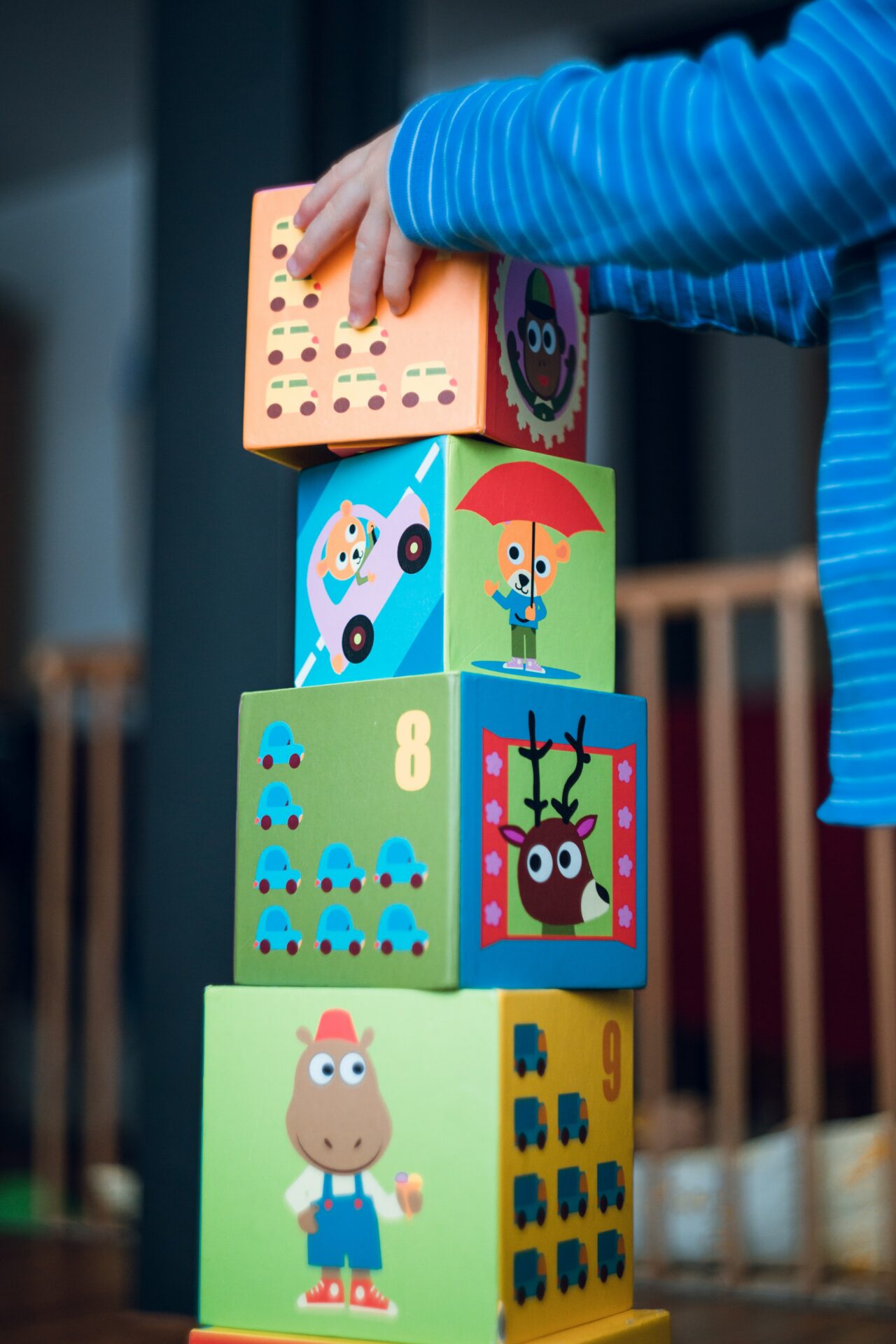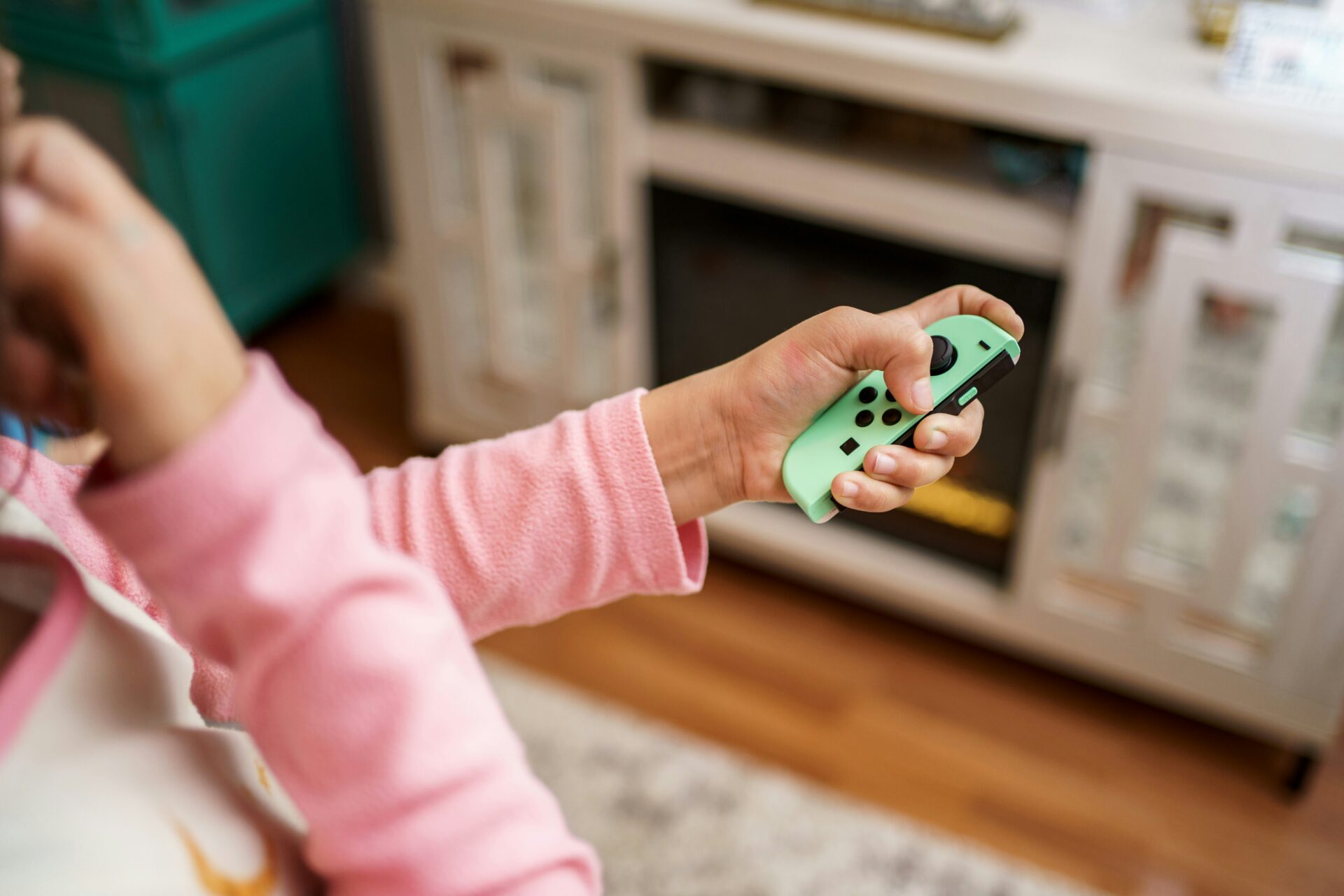Engaging Indoor Play: Tips For Keeping Your Baby Active And Happy
Discover the limitless benefits of engaging indoor play for your baby’s development and happiness. In this article, we will explore various creative activities that can transform ordinary moments into extraordinary memories for your family. By nurturing your baby’s creativity, you not only infuse joy and laughter into everyday life, but also cultivate a vibrant atmosphere where the spirit of innovation thrives. From sensory play to music and movement activities, we will provide you with practical tips on how to keep your baby active and happy indoors. Join us on this journey of unlocking the magic of imaginative pursuits and creating delightful experiences that will leave a lasting impression on your little one.

Benefits of Engaging Indoor Play
Engaging in indoor play is not only a way to keep your baby entertained, but it also offers numerous benefits for their development. From promoting physical growth to improving cognitive skills and fostering social interaction, here are the key advantages of engaging in indoor play:
Promotes physical development
Engaging in indoor play activities provides ample opportunities for your baby to develop their fine and gross motor skills. Through activities such as crawling, reaching for objects, and grasping toys, they can strengthen their muscles and improve coordination. Whether it’s playing with age-appropriate toys or participating in physical exercises, indoor play helps support their overall physical development.
Enhances cognitive skills
Indoor play allows your baby to explore their environment and engage with various toys and materials, which promotes the development of cognitive skills. Activities like stacking and building with blocks help enhance their problem-solving and spatial awareness abilities. Introducing color and visual stimulation through toys and posters also stimulates their visual perception and cognitive processing. Engaging in indoor play activities that involve problem-solving, critical thinking, and imaginative play can help boost their cognitive development.
Improves social interaction
Engaging in indoor play with your baby provides an opportunity for them to interact with you and other family members, which helps develop their social skills. Through activities like playing with puppets, participating in baby groups or classes, and arranging playdates with other babies, they learn how to communicate, share, and take turns. These interactions foster important social skills and create a foundation for future friendships and relationships.
Boosts mood and mental health
Engaging in indoor play activities has a positive impact on your baby’s mood and mental health. Playtime allows them to release energy and express emotions, which can contribute to their overall well-being. Additionally, participating in activities such as interactive music and dance sessions can promote relaxation and reduce stress. Creating a safe and stimulating environment through engaging indoor play can have a significant impact on your baby’s mood and emotional development.
Creating a Safe and Stimulating Environment
In order to fully enjoy and benefit from indoor play, it is crucial to create a safe and stimulating environment for your baby. Here are some tips to help you establish an ideal play area:
Designate a play area
Set aside a specific area in your home where your baby can engage in indoor play. This space should be dedicated solely to playtime, which helps create a clear distinction between play and other activities. It can be a corner of a room or a designated playroom, depending on the available space. Providing a defined play area helps create a sense of structure and allows your baby to focus on their play activities.
Remove hazards
Before allowing your baby to engage in indoor play, ensure that the area is free from any potential hazards. Remove sharp objects, fragile items, and small parts that can pose a choking hazard. Secure loose cords and cables to prevent accidents. Additionally, cover electrical outlets and block access to stairs or any other area that may present a danger to your baby. Creating a safe environment is essential to prevent accidents and ensure your baby’s well-being during playtime.
Provide age-appropriate toys and materials
When setting up your baby’s play area, make sure to include age-appropriate toys and materials that suit their developmental stage. For infants, choose toys that stimulate their senses, such as rattles, soft toys, and objects with different textures. As they grow older, introduce toys that encourage exploration, creativity, and problem-solving, such as building blocks, puzzles, and shape sorters. Age-appropriate toys and materials allow your baby to engage in play that is both fun and beneficial for their development.
Use soft padding and furniture covers
To ensure your baby’s safety and comfort during playtime, consider using soft padding and furniture covers in the play area. Place foam mats or rugs on the floor to provide a cushioned surface for crawling and playing. Cover sharp edges or corners of furniture with bumpers or soft padding to prevent injuries. Creating a soft and comfortable environment enhances your baby’s overall play experience and minimizes the risk of accidents.
Fun and Engaging Activities
Engaging in fun and stimulating activities is an integral part of indoor play. Here are some activities that can keep your baby entertained and promote their development:
Sensory play
Sensory play involves engaging your baby’s senses through various materials and textures. Fill a shallow container with uncooked rice or pasta and let your baby explore the different textures with their hands. You can also provide them with sensory toys such as squishy balls or textured blocks. Sensory play not only stimulates their senses but also enhances their fine motor skills and cognitive abilities.
Tummy time
Tummy time is an essential activity for babies to strengthen their neck and upper body muscles. Place your baby on their stomach on a soft surface, such as a blanket or play mat, and encourage them to lift their head and explore their surroundings. You can add toys or mirrors within their reach to make tummy time more engaging and enjoyable. Regular tummy time sessions contribute to your baby’s physical development and help prepare them for milestones like crawling and sitting up.
Baby yoga and stretches
Introducing baby yoga and stretches during playtime can help promote flexibility and muscle development. Gently stretch your baby’s arms and legs, encouraging them to explore different movements. You can also incorporate simple yoga poses designed for babies, such as the butterfly pose or the cat-cow stretch. Baby yoga and stretches not only aid in physical development but also provide a calming and bonding experience for both you and your baby.
Interactive music and dance sessions
Engaging in interactive music and dance sessions with your baby can be an enjoyable and stimulating activity. Play different types of music and encourage your baby to move their body and make sounds. Use instruments like drums or shakers to add an interactive element to the session. Dancing and moving to the rhythm of the music helps develop coordination, rhythm, and a sense of self-expression. Interactive music sessions also provide an opportunity for bonding and promoting social interaction between you and your baby.
Making Use of Everyday Objects
Engaging in indoor play doesn’t necessarily require expensive toys or equipment. Everyday objects found around your home can be transformed into fun and engaging play materials. Here are some ideas for using everyday objects to enhance your baby’s play experience:
Stacking and building with blocks
Stacking and building with blocks is a classic activity that promotes fine motor skills and problem-solving abilities. Instead of purchasing specialized blocks, you can use everyday objects like plastic cups, cardboard boxes, or even empty food containers. Allow your baby to explore different sizes and shapes of objects, encouraging them to stack and build to their heart’s content. Not only will this activity enhance their motor skills, but it will also stimulate their creativity and imagination.
Exploring textures with kitchen utensils
Kitchen utensils can provide a sensory experience for your baby by allowing them to explore different textures. Fill a shallow pan with dry rice or flour and let your baby touch, feel, and scoop the materials with utensils like spoons or measuring cups. This activity engages their senses while also developing their hand-eye coordination. Remember to closely supervise your baby during this activity to ensure their safety.
Using empty boxes and containers for imaginative play
Empty boxes and containers can easily be transformed into imaginative play props. Encourage your baby to crawl through a large cardboard box, transforming it into a secret hideout or a spaceship. Provide them with different sizes of containers and let them sort objects or stack them to create towers. This type of play promotes creativity, problem-solving, and imaginative thinking. Plus, it’s a great way to recycle and repurpose everyday items that would otherwise be discarded.
Creating DIY sensory bottles
Sensory bottles are simple, yet engaging, toys that provide visual stimulation and sensory exploration. Fill a clear plastic bottle with various items like colorful beads, glitter, or small toys and secure the cap tightly. Show your baby how the items move and swirl inside the bottle when shaken. DIY sensory bottles are not only visually appealing but also help develop their visual tracking skills. Ensure the bottle is tightly sealed at all times to avoid any choking hazards.

Introducing Color and Visual Stimulation
Colorful and visually stimulating elements can greatly enhance your baby’s indoor play experience. Here are some ideas to incorporate color and visual stimulation into their playtime:
Using colorful toys and mobiles
Choose toys and mobiles that have vibrant colors and contrasting patterns. Brightly colored toys grab your baby’s attention and stimulate their visual perception. Mobiles with brightly colored hanging objects can captivate their interest and promote their visual tracking skills. Ensure that the toys and mobiles are age-appropriate and safe for your baby to interact with.
Integrating vibrant art and posters
Hang colorful artwork or posters in your baby’s play area to create a visually engaging environment. Choose artwork that features bold colors, simple shapes, and recognizable objects or animals. This not only helps stimulate their visual development but also introduces them to different forms of art and creativity. Ensure that the artwork is securely hung and out of your baby’s reach.
Playing with light and shadow
Explore the concept of light and shadow during indoor playtime. Use a flashlight to create shadows on the wall or ceiling, allowing your baby to observe and follow the movements. You can also hang a colorful fabric near a source of natural light to create a captivating display of colors and shadows. Playing with light and shadow provides a visually stimulating experience for your baby and encourages their curiosity and observation skills.
Engaging with Books and Storytelling
Books and storytelling play a significant role in your baby’s cognitive and language development. Here are some ways to engage with books and make storytelling a part of their indoor play:
Read aloud with different voices and expressions
When reading to your baby, use different voices, tones, and facial expressions to make the storytelling experience more engaging. Varying your voice pitch and pace can captivate their attention and enhance their listening skills. Incorporate gestures and interactive elements, such as pointing to pictures or asking questions, to encourage their participation and understanding of the story.
Use interactive books and puppets
Interactive books with touch-and-feel elements, flaps to lift, or buttons to press can add an interactive dimension to storytelling. Allow your baby to explore the book’s features, encouraging their curiosity and fine motor skills. You can also incorporate puppets into storytelling sessions, bringing the characters to life and making the stories more immersive and entertaining. Interactive books and puppets make the reading experience more interactive and interactive.
Create a storytelling corner with comfy seating
Designate a cozy corner in your baby’s play area as a dedicated storytelling spot. Arrange soft cushions, blankets, or a small armchair to create a comfortable seating area. This dedicated space signals that it’s time for storytelling and provides a cozy environment for you and your baby to enjoy together. Having a designated storytelling corner helps create a sense of routine and excitement around reading activities.

Encouraging Independent Play
While engaging in playtime with your baby is crucial, it is equally important to encourage independent play. Independent play allows your baby to explore their own interests, develop their imagination, and foster a sense of autonomy. Here are some ways to promote independent play:
Rotate toys to maintain interest
Rotate your baby’s toys regularly to prevent boredom and maintain their interest in playtime. Keep a selection of toys stored away and swap them with the toys currently available in their play area. This fresh rotation of toys introduces novelty and stimulates their curiosity. It also allows your baby to explore different toys, fostering independent play and creativity.
Promote open-ended play with versatile materials
Provide your baby with open-ended toys and materials that encourage imaginative play. Items like playdough, building blocks, and art supplies allow your baby to explore their creativity and engage in open-ended play. These materials can be used in various ways, enabling your baby to experiment and create based on their own interests and ideas.
Allow exploration and freedom of movement
Give your baby the freedom to explore their surroundings and move freely during playtime. This can involve rearranging furniture to create an open space for them to crawl or walk, or providing a safe area for them to explore. Encourage them to follow their curiosity, discover their environment, and engage with toys and objects in their own way. Allowing exploration and freedom of movement promotes independence and autonomy.
Offer age-appropriate puzzles and manipulative toys
Introduce age-appropriate puzzles and manipulative toys that encourage problem-solving and fine motor skills. Choose puzzles with a limited number of pieces and larger knobs for easy manipulation. Manipulative toys like shape sorters or lacing beads help develop hand-eye coordination and cognitive abilities. Offering puzzles and manipulative toys promotes independent play while nurturing important cognitive and physical skills.
Incorporating Physical Activity
Indoor play provides an excellent opportunity to incorporate physical activity into your baby’s routine. Engaging in physical activities helps promote gross motor skills, fitness, and overall well-being. Here are some ways to incorporate physical activity into indoor play:
Baby-friendly exercises and yoga
Engage your baby in simple exercises and yoga poses to promote their physical development. Gently move their limbs in controlled motions, allowing them to explore different movements. Basic yoga poses, such as the cobra pose or the bridge pose, can also be introduced with guidance. These exercises and yoga poses help improve muscle strength and flexibility while providing a fun and interactive experience for your baby.
Crawling and obstacle courses
Create crawling and obstacle courses within the play area to encourage your baby’s gross motor skills and physical exploration. Use cushions or pillows as obstacles to crawl over or under. Set up tunnels or soft play structures for them to navigate through. Crawling and obstacle courses promote mobility, coordination, and spatial awareness.
Ball games and rolling activities
Introduce ball games and rolling activities to promote hand-eye coordination and motor skills. Use soft, lightweight balls that are safe for your baby to handle. Encourage them to roll the ball back and forth or try to catch it. This type of activity develops their motor skills while also fostering social interaction if played with a caregiver or other family members.
Dancing and movement to music
Dancing and moving to music is an enjoyable and energetic way to incorporate physical activity into indoor play. Play upbeat music and encourage your baby to move their body, sway, or clap their hands to the rhythm. Join them in dancing and create simple movements that they can imitate. Dancing and movement sessions not only promote physical activity but also enhance coordination and rhythm.
Utilizing Technology as a Tool
While it’s important to limit screen time, technology can be used as a tool to enhance your baby’s indoor play experience. Here are some ways to incorporate technology in a balanced and beneficial way:
Interactive educational applications and websites
There are numerous interactive educational applications and websites designed specifically for young children. These apps and websites offer age-appropriate activities, games, and stories that can supplement your baby’s learning and playtime. Select apps or websites that focus on educational content, such as letters, numbers, shapes, and colors, to provide a balanced and enriching experience.
Age-appropriate videos and multimedia content
When choosing videos or multimedia content for your baby, opt for age-appropriate and educational materials. Select videos that introduce concepts like nursery rhymes, animals, or basic vocabulary. Ensure that the content is engaging, visually stimulating, and appropriate for your baby’s age. Watching videos can be a supplementary activity to other forms of play but should not replace the majority of your baby’s playtime.
Limit screen time and balance with other activities
While technology can be a useful tool, it’s essential to limit your baby’s screen time and balance it with other activities. The American Academy of Pediatrics recommends avoiding screen time for infants under 18 months, except for video chatting. For toddlers between 18 and 24 months, screen time should be limited and carefully selected. Ensure that the majority of your baby’s playtime involves hands-on, interactive, and engaging activities that promote their physical, cognitive, and social development.
Engaging with Other Families and Peers
Engaging with other families and peers provides valuable social interaction opportunities for your baby. Here are some ways to encourage social engagement and connect with other families:
Arrange playdates with babies of similar age
Arrange playdates with other babies or families that have infants of similar age to your baby. This allows them to interact, observe, and learn from each other. During playdates, provide a safe and supervised environment for your baby to play alongside their peers. Interacting with other babies fosters essential social skills such as sharing, taking turns, and cooperation.
Join parent and baby groups or classes
Joining parent and baby groups or classes can provide a structured environment for social interaction and play. These groups often offer a variety of activities, such as music classes, sensory play sessions, and storytelling circles. Not only do these classes provide an opportunity for your baby to interact with other babies, but they also allow you to connect and engage with other parents, creating a supportive and social network.
Visit indoor playgrounds or family-friendly venues
Indoor playgrounds and family-friendly venues are ideal settings for your baby to engage with other children while enjoying various play activities. These venues often offer age-appropriate play areas, sensory play zones, and play equipment designed for young children. Visiting these venues provides a stimulating and social environment for your baby to interact, explore, and have fun.
Participate in virtual play groups
Virtual play groups, especially in times when physical gatherings are limited, offer a convenient way for your baby to interact with other children and families. Join online playdates or virtual playgroups where babies and parents can engage in activities, sing songs, and socialize through video calls. While virtual interactions might not offer physical contact, they still provide an opportunity for social engagement and connecting with other families.
In conclusion, engaging in indoor play with your baby offers a multitude of benefits for their physical, cognitive, and social development. By creating a safe and stimulating environment, incorporating fun and engaging activities, utilizing everyday objects, introducing color and visual stimulation, engaging with books and storytelling, encouraging independent play, incorporating physical activity, utilizing technology as a tool, and engaging with other families and peers, you can provide a comprehensive and enriching indoor play experience for your baby. Embrace the joy and bonding that come with indoor play, and watch your baby thrive and grow in a nurturing and stimulating environment.

